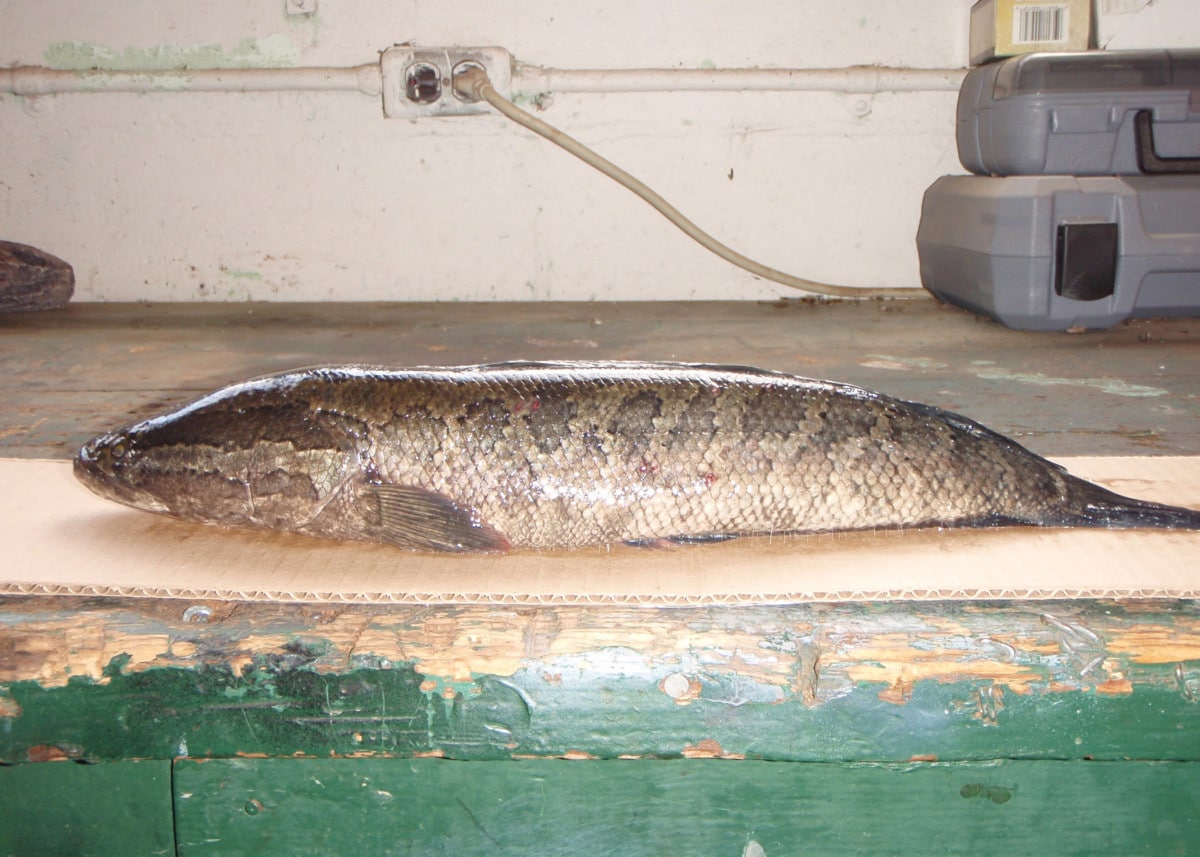Catching a northern snakehead fish may not seem like such a big deal, but it is because the unique critter is not native to the U.S. and it’s illegal to transport, sell or possess live snakeheads in Mississippi.
The Mississippi Department of Wildlife, Fisheries, and Parks was notified June 5, 2017, that a northern snakehead was caught in Lake Whittington, an oxbow lake of the Mississippi River in Bolivar County. Officials believe the snakehead traveled to the lake from Arkansas across the Mississippi River during high water levels.
Snakeheads have been reported frequently since 2008 after an accidental release from a commercial fish farm. These fish are native to Russia, Korea, and China. In China, they are widely cultured for food and frequently sold in live fish markets. Some believe the snakehead made its way around the U.S. by individuals releasing them from the live food fish or the aquarium fish trade. Established populations have been found in Arkansas, Virginia, New York, Pennsylvania, Maryland, Hawaii, Texas, Florida and a few other states.
Northern snakeheads are similar in appearance to Mississippi’s native bowfin, also known as grinnel. The northern snakehead can reach lengths of about 33 inches and are generally golden tan to a pale brown with dark-brown mottling. Their jaws contain rows of small teeth similar to the pike and pickerel. The fish also have large canines on the lower jaw and palatines, the bones on each side of the palate.
The bowfin grows to an average of 32 inches and has a tan-olive coloring with dark-olive patterning and an identifying black spot at the base of the tail. Its jaws contain peg-like teeth, and its anal fin is short compared to the extended anal fin of the snakehead.
Northern snakeheads are typically found in shallow, backwater areas and can breathe air. This ability allows them to survive for extended periods out of the water by going dormant as long as they are in a moist environment. The fish can wiggle and flop short distances on land in order to find new waters.
Snakeheads’ impact on native fish populations is unknown. Based on experiences in other states, most believe the impact on our native Mississippi populations will be minimal. It is likely that the snakehead will travel to other bodies of water, especially other oxbows connected to the Mississippi River. The fish has a wide tolerance for water temperatures and environmental conditions, so they probably will survive, reproduce and spread. Aquatic insects, catfish, crawfish, frogs, minnows, carp, and bream are a large part of the diet for northern snakeheads.
The MDWFP is going to present a program about Snakehead fish at the Visitor Education Center at 2 p.m. on June 30th where biologist Nathan Aycock will discuss the invasive snakehead’s biology, its current status, and how to distinguish it from Mississippi’s native bowfin. A question-and-answer session will follow the presentation which is open to the public.
MDWFP added that if Mississippians catch a northern snakehead, they requested they keep it, photograph it, note when and where it was caught, and then report it to the Fisheries Bureau of the MDWFP.
*Photo caption – The northern snakehead fish is an invasive species now found in Mississippi waters.




